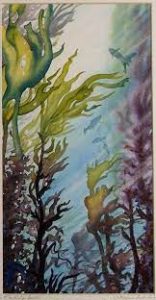 The Columbia City Yoga on-line Moving into Meditation class met this morning. We continued exploring life as a sacred journey. Today our breath was our companion and guide. We explored oscillating patterns of breathing and movement. The underwater world of seaweed was a metaphor for how we can remain rooted and also give ourselves over to undulation, flow and a deep sense of allowing – even that which is painful. In saying yes to life we value and revere the lives we’ve loved and lost.
The Columbia City Yoga on-line Moving into Meditation class met this morning. We continued exploring life as a sacred journey. Today our breath was our companion and guide. We explored oscillating patterns of breathing and movement. The underwater world of seaweed was a metaphor for how we can remain rooted and also give ourselves over to undulation, flow and a deep sense of allowing – even that which is painful. In saying yes to life we value and revere the lives we’ve loved and lost.
This week’s meditation was greatly inspired by Valerie Brown’s Kosmos Journal essay, Hope Leans Forward | The Body as Grounded Wisdom, The essay was reprinted from Valerie’s book, Hope Leans Forward: Braving Your Way Toward Simplicity, Awakening and Peace. Valerie is a meditation teacher ordained in the order of Thich Nhat Hanh. She leads an annual pilgrimage to El Camino de Santiago, Spain to celebrate the power of sacred place. You can find her essays, guided meditations and videos on her web-site. Valerie Brown studied Donna Farhi’s teaching on how to free the breath and the mind.
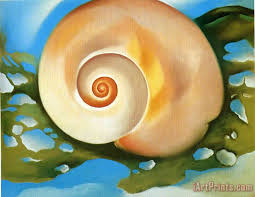 We also heard insights from meditation and yoga instructor, Donna Farsi. Her Yoga International article How Breath Awareness Will Change Your Life. Donna has been teaching yoga informed movement for over forty years. She is author of several books including the Breathing Book. This essay is a beautiful example of her skill in bringing meditation and movement together. Valerie Brown studied Donna’s teaching on how to free the breath and the mind.
We also heard insights from meditation and yoga instructor, Donna Farsi. Her Yoga International article How Breath Awareness Will Change Your Life. Donna has been teaching yoga informed movement for over forty years. She is author of several books including the Breathing Book. This essay is a beautiful example of her skill in bringing meditation and movement together. Valerie Brown studied Donna’s teaching on how to free the breath and the mind.
Guided Reflection
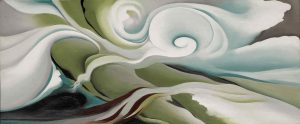 Last week we continued our exploration of life as a sacred pilgrimage by reflecting on uncertainty. How often we respond to uncertainty by the impulse to control life. We explored how trust can help ease our struggles and our suffering. Trusting loving awareness and practicing loving kindness can help us to find inner peace. John O’Donohue encouraged his readers to find the place that hasn’t been wounded. I think that practicing loving self-care can help us to find our way back to an experience of wholeness.
Last week we continued our exploration of life as a sacred pilgrimage by reflecting on uncertainty. How often we respond to uncertainty by the impulse to control life. We explored how trust can help ease our struggles and our suffering. Trusting loving awareness and practicing loving kindness can help us to find inner peace. John O’Donohue encouraged his readers to find the place that hasn’t been wounded. I think that practicing loving self-care can help us to find our way back to an experience of wholeness.
In her Kosmos Journal article, Hope Leans Forward | The Body as Grounded Wisdom, Valerie Brown shares her healing journey. She describes years of work that punished her spirit and body. Painful years of illness and loss lead her on a healing journey to Mount Koya in Japan. The temple here is where she began the eighty-eight-temple pilgrimage of Shikoku. She discovered the temple cemetery dedicated to Jizo Bodhisattva the Japanese deity said to care for deceased infants and children. She writes:
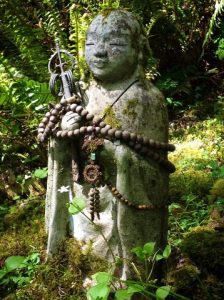 Here in the cold spring dampness of Kōya-san, my loss and grief were acknowledged and shared. . . . I sensed that those in the cemetery around me understood and . . . made space for the grieving to be and to breathe. The Japanese people recognized and honored the grief . . . and these healing rituals . . . said to me, What happened to you happened to us. What you’ve done, we’ve done. You are loved here. You can heal here. All of you is accepted, loved here. . . . The beginning of my healing started in a very unlikely place, halfway around the world in a cold, damp cemetery in Japan, where the collective grief was free to breathe and be held by everyone.
Here in the cold spring dampness of Kōya-san, my loss and grief were acknowledged and shared. . . . I sensed that those in the cemetery around me understood and . . . made space for the grieving to be and to breathe. The Japanese people recognized and honored the grief . . . and these healing rituals . . . said to me, What happened to you happened to us. What you’ve done, we’ve done. You are loved here. You can heal here. All of you is accepted, loved here. . . . The beginning of my healing started in a very unlikely place, halfway around the world in a cold, damp cemetery in Japan, where the collective grief was free to breathe and be held by everyone.
She followed this experience by immersing herself in the practices of meditation and yoga. One of her first realizations was to recognized the rigidity of her body and breath. She was shocked to realize she couldn’t feel her breath. She recalls how after:
. . . years of living an intellectual, success-driven life set me up for intellectual breathing. I was largely in my head, cut off from the wisdom of my body. My breathing was frozen. I was so focused on “getting there” as opposed to “being there,” and had spent so much time trying to outrun poverty and prove my own worthiness to myself and others that I had forgotten how to breathe. . . . I had forgotten how to breathe with my whole body.
I think many of us who are travelers on this path have had similar realizations. I remember the time when tears flowed when I finally gave myself permission to be and breathe.
Valerie began to study and explore the breath. She forced herself into the stillness of a “do nothing” breathing exercise until she finally felt something. She writes:
 . . . [O]ne day I felt something. It was my breath but not in my chest and shoulders. I felt it at my reproductive organs and below the navel. It was like my body was opening and closing to the rhythm of my in- and out-breath. Oscillating, at first the breath was moving my tailbone and then rolling upward and outward to my shoulders and hands and then downward and inward to my legs and feet. Like boneless seaweed, the breath moved higher and lower, left and right, circular and in, multidirectional, then becoming calm and effortless. Through quiet attention, patience, and perseverance, this bruised and battered part of my body was beginning to move in freedom and harmony.
. . . [O]ne day I felt something. It was my breath but not in my chest and shoulders. I felt it at my reproductive organs and below the navel. It was like my body was opening and closing to the rhythm of my in- and out-breath. Oscillating, at first the breath was moving my tailbone and then rolling upward and outward to my shoulders and hands and then downward and inward to my legs and feet. Like boneless seaweed, the breath moved higher and lower, left and right, circular and in, multidirectional, then becoming calm and effortless. Through quiet attention, patience, and perseverance, this bruised and battered part of my body was beginning to move in freedom and harmony.
Valerie “was being invited to trust and allow the breath to emerge and to release naturally.” Donna Farhi, one of Valerie’s teachers, describes the freedom we might find in breathing:
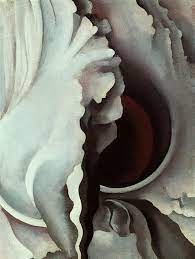 When we are still in the womb—an expanding, condensing rhythm, threaded together by moments of pause. It is the pulse of the universe, and from the moment of conception we are that. While we are in our mother’s body, the breath is an interior movement, a process of shimmering cellular respiration. At the moment of birth, when we first breathe into the lungs, we are initiated into the family of things. Suddenly the world is in us and we are in the world. We draw the breath inside the body, for a moment it becomes us, and we exhale a part of what has become us back into the world. While we are young we tend to breathe with the kind of complete freedom and ease that is an expression of our innocence and fearlessness. As we age and lose some of that innocence, rubbing up against life’s challenges, we unconsciously shut down, and we do this first and foremost by constricting our breath.
When we are still in the womb—an expanding, condensing rhythm, threaded together by moments of pause. It is the pulse of the universe, and from the moment of conception we are that. While we are in our mother’s body, the breath is an interior movement, a process of shimmering cellular respiration. At the moment of birth, when we first breathe into the lungs, we are initiated into the family of things. Suddenly the world is in us and we are in the world. We draw the breath inside the body, for a moment it becomes us, and we exhale a part of what has become us back into the world. While we are young we tend to breathe with the kind of complete freedom and ease that is an expression of our innocence and fearlessness. As we age and lose some of that innocence, rubbing up against life’s challenges, we unconsciously shut down, and we do this first and foremost by constricting our breath.
With that beautiful description of the breath, I invite you to join me in the “Do Nothing Breathing Inquiry” that Valerie now teaches. I invite you to create a posture where you can be as relaxed as possible. Take a few moments to gather pillows and blankets as you need them.
Allow your eyes to be open or closed. Notice what feels most comfortable.
Notice the shape of your body without judging yourself.
Feel your feet on the floor if sitting.
Feel your legs, hips, torso, arms, chest, face.
Allow your spine to relax, and become aware of the back, sides, and front of the body.
Bring your attention to your breathing.
Feel the breath come in and go out.
Notice and feel the in-breath.
Notice the pause between the in- and the out-breath.
Notice and feel the out-breath.
Feel the belly rise and fall.
Practice gently bringing your attention back to the sensation of breathing; feel the rise and fall of your belly.
Feel yourself breathing in and out.
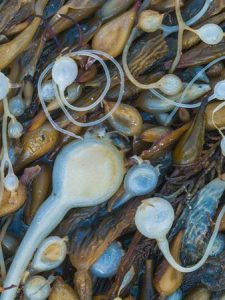 Imagine your body like boneless seaweed with roots, grounded yet totally free.
Imagine your body like boneless seaweed with roots, grounded yet totally free.
Notice how you’re feeling physically, mentally, emotionally, and spiritually.
Take a moment to sense your breathing and ask yourself, “Where do I feel my breathing?” and simply wait.
Return to the question over and over: “Where do I feel my breathing?” Let whatever perceptions you have be here without editing them. Don’t discount tiny movements.
Place one hand on the belly and the other at the chest or any place on your body, if that’s appropriate for you, and feel the movement of the hand at the belly and at the chest or that part of your body.
Ask yourself, “What does my breath feel like?” and simply wait without judging yourself. Gently keep returning to this question: “What does my breath feel like?” Become aware of words or images that might arise to describe your breath. Again, let whatever perceptions you have be here without editing them.
Return your attention to the body and mind, gathering an impression of how you are doing at this moment. There is no need to change or edit this moment.
Our breath can help us to move back into the stream of life. We can allow this ebb and flow to move through us. In moments of discomfort we can learn to soften and breathe into our tightness or difficulty. Donna writes that:
 The breath then becomes like a companion that is always reminding us of who we are. . . . When an upsetting emotion arises during meditation, we learn to give this feeling room by allowing our breath to rise and fall. This teaches us that while we cannot control what is going to happen to us, we can control our response. We can choose to open up or to shut down, to soften or to harden. . . . . This choice allows us to become intimate with the breadth and depth of our humanity.
The breath then becomes like a companion that is always reminding us of who we are. . . . When an upsetting emotion arises during meditation, we learn to give this feeling room by allowing our breath to rise and fall. This teaches us that while we cannot control what is going to happen to us, we can control our response. We can choose to open up or to shut down, to soften or to harden. . . . . This choice allows us to become intimate with the breadth and depth of our humanity.
When you are ready, stretch gently to close this practice and notice how you feel.
